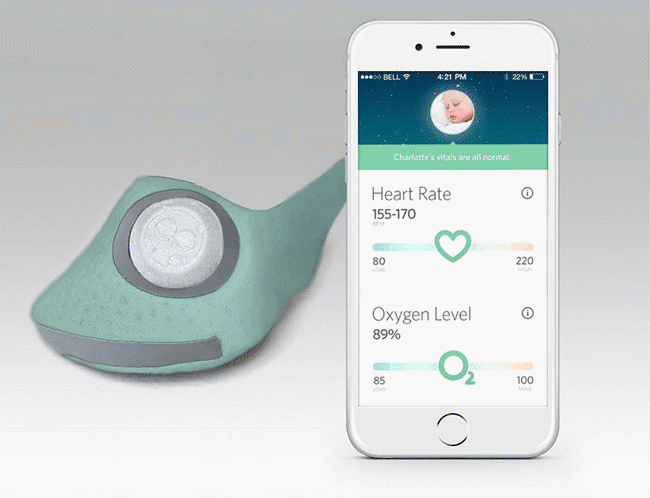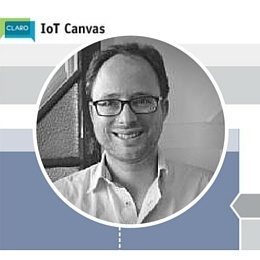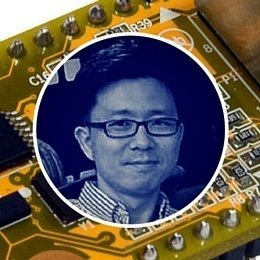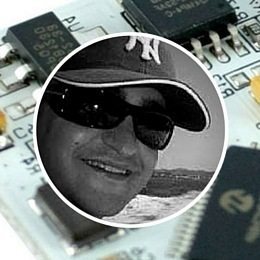A dive into the current state of IoT connectivity platforms, history of working with IoT chipmakers, and where the market is heading next.
Can you give us a little bit background on the company founders? You have some history in the semiconductor space and obviously you have some interesting hardware partnerships at the moment.
A few of us worked together at a company that was called ZeroG Wireless. It was an embedded Wi-Fi company that was started in 2006, when the Internet of Things was just starting to come together. The name ZeroG was a play on 2G, 3G, and 4G. We said, “No, it’s not about the speed or the power, it’s about getting into all the things around you.”
Now, we learned a few things. We learned that the chip business is a very difficult space to be in for a start-up, but we also learned that people were using wireless chips to build some pretty crazy stuff.
I had worked at Intel in the past, and at that time there were a billion 8-bit microcontrollers sold every year — still, by one company — and they were all running at like 11 megahertz. It was crazy. And it’s because all the things around you — things like a smoke detector and a little motion sensor — have these tiny, tiny little micro-controllers inside of them.
We thought that was kind of interesting. We said, “Well look, that clearly is where the market is going. Where .00001 percent of those are connected today, but one day, it might be 5 percent.” It seems to be heading there even faster now.
Along the way we met with [Ayla Co-Founder] Adrian Caceres, who was one of the smartest guys I had ever met, working at another company. He’s really the system architect who knows how to make a secure, scalable network, and more importantly, how to structure the architecture to support it. He has done this at Amazon and other companies.
So when ZeroG was sold to Microchip back in 2010, we all got together and started hashing out our vision for how the world was going to unfold.
What seemed clear to us was that all of our customers at ZeroG had been really good at making demos, but really struggled with the cloud software critical for making connected products. As an example, the difference between the Amazon Kindle and every other e-reader was great software.
So we said, “We could give them great software”. It’s kind of like a white-labeled Kindle that allows you to connect, but with the massive fragmentation in the Internet of Things space, the only way you could do that was to somehow get the leading chip companies, who make all the networking that goes in these things, to put your software inside the chips.
Looking back now, it sounds like that’s nearly impossible, but that’s what we did. It took us nine months. We met with all of the leading chip companies, and once we got a deal with one of them, we incorporated the company.
So essentially our cloud-based operating system now has endpoints that reach down into the “things,” so that we don’t have to write unique software for each device. We have continued to build this out, and it has proven to be a very effective architecture. Every time we release new features in the platform, our customers just make a configuration change to use it rather than having Ayla write unique software for them.

How is Ayla’s approach different from some of the other IoT connectivity providers in the market?
From the beginning, we saw that the Internet was continuing its expansion. It went from DARPA, to PCs, and to mobile. Now we see an infrastructure of services enabling the network, to broaden into “things.”
Our view, though, was that we, and our customers, have no idea what products are going to be the “home run” products, and which features of those products will be what people really care about. How will those devices work with the devices launched next year? What will be the channel through which manufacturers will want to sell these products? What might manufacturers and end-users want to be able to do with the data?
We started by saying, “I have no idea what the answers are to any of those questions. So let me build a platform so that my customers don’t need to know either”.
Where Ayla differentiates is in its agility. We believe the more agile players will win. If you don’t need a crystal ball to figure out what’s going to happen in the future, but you feel comfortable that as the future unfolds, you can adapt — that’s what we’re aiming for.
What are some of the concerns you are seeing from companies exploring their deployment options?
You know, the genetic makeup for many of these companies who want to launch these types of connected products is sometimes different from what it needs to be to create great innovation.
The way these companies have always done things can sometimes make the product development process very slow. We have customers who are really, really big and traditionally have longer development cycles, but with Ayla they have been able to move at a pretty quick pace given their size. We also have these startup companies, where 100 percent of their fiber is invested in everything they do and getting these things done. They’re all-in and move very fast. So, sometimes it is the organization itself, and its capability to embrace what feels really scary.
Many of these companies in the home-control space feel like they are part of a greater whole; which they are right. You don’t get a gateway for every smart thing in your house, right? If you make a product that connects over Z-Wave or ZigBee, like a moisture detector, you don’t get your own moisture detector gateway. But anywhere you have to put pieces together, creates friction. So the market is figuring out how to solve that, and you’re seeing some good ways of getting it done at the moment.
So that’s the other side. Companies have to see that cloud-to-cloud integrations make sense, which they do. The market is going from closed systems to open.
It sounds like people are starting to look to you for higher-level management of that stack of technologies.
You know, it’s very consultative. So we’ll see some pretty big brands, and they know they want to connect a safety device, for example, but they are waiting to hear best practices on how the thing should join a network, how the app should find the thing, and how they might want to make it work with other “things” and channel players.
Over time, we’ve learned about specific eccentricities of particular markets like medical, or fire and safety. Then we’re teaching best practices around these markets for managing data and devices, and how all the networking works.
Do you allow different deployment options? Can customers host some of it if they prefer?
In order to provide a seamless layer of connectivity and achieve a user experience similar to something like that of the Kindle, customers do not host any part of the service, but more importantly, we find that they don’t want to. Now, some companies do have their own cloud with which we can integrate our service.
Let’s just say, for example, a thermostat company has their own cloud, but there are certain capabilities in their cloud that they don’t provide. And they have to make a motion detector, and other products, work seamlessly with their thermostat. So even for these customers, our cloud integrates with other clouds or even with their customer support tools, which might be provided by a third party, like Salesforce for instance, to bring it all together.
Here’s what’s happening with the Internet: I think the “thing” is now becoming a system. The system includes a virtual replica of the device and that virtual replica has great flexibility to connect seamlessly to other cloud capabilities that that customer may have, or even that a partner has.
I look at it like Lego pieces. If you tell a customer, “No, this is how you have to do it, and you can’t do it that way,” then they start getting nervous. They say, “Well, wait a minute, I might want to do something different.” And that’s why clouds need to talk to other clouds, whether they’re in the same company that we’re dealing with, or partners.
So as a platform, if your customers want to integrate with a Wink/SmartThings, or one of those gateways, then you help them do that using your servers versus them going to a third party.
That’s right, and those are often cloud-to-cloud integrations. The way we view it is: If you make a device today, do you make it just so it works with Apple? No. Do you make it just so it works with Google? No. You should be able to make it work with pretty much any channel. If there’s a retailer that has a special requirement, well, you should be able to do that without having to create a separate project for each one and through the cloud, you’re able to have that flexibility.
Most of our customers do not need to have their own servers. The whole idea is that they can completely focus on what really differentiates them.
The high-level theory of Ayla is that instead of each company reinventing the wheel — because all of them have to do messaging and certificates, databasing, push notifications, rules engines, and links to weather data — that’s all just built-in to the Ayla Platform and is configurable.
If they see we have all of the menu items they want, then they can focus on the industrial design of their product. Make it an awesome-looking device, and then make the app and user experience really special. If they can focus their investment in those areas where they differentiate, our theory, and I think they agree, is that they can build better products.
And this reaches down to user analytics for the devices evolution?
Adrian, my co-founder, was very adamant that one of Amazon’s greatest values was that it was this giant feedback loop. Our customers don’t necessarily think that way out of the box, but that’s part of the consulting, to say, “Did you know that you could understand so much more about how your device is being used?”
Now, you can do this with the right privacy controls so you can track users, but not record names, emails, and exact locations. Then you can ask, “What do power users look like? What are the features that are being used the most, and which ones are not?” We think that if you enable that feedback loop, you then have the ability to quickly learn, and then modify your products, tweaking and tuning them as you go. Those are the companies that are going to win in the Internet of Things.
In terms of device connectivity, how big is your footprint to get them up on the network?
We basically take all of the networking and security and so on, and we actually run it inside the Wi-Fi module. But then, on the system side, if there’s some little micro-controller running it, it’s like 20 kilobytes.
The great part is most companies who make “things” are not networking companies. If you ask them to write a single line of networking code, they’re going to have a little trouble. So we remove that as a requirement and have all of the networking and security packaged up as a black box.

Going back up the stack from the hardware, are people coming to you to help them create end-user or field applications?
Yes. The third leg of our platform is our mobile application libraries. Again, the theory being that if you’re a manufacturer today, you’re going to struggle with building apps. So we provide the tools to enhance that effort, speed it up, get rid of the pain.
How do apps find devices when you first bring them up? How do you securely connect things and establish trust, and ownership?
Our application libraries can talk to the device software in the cloud to do all of that, and our customers don’t have to worry about it. It’s a beautiful kind of development that marries security with usability.
Can you talk about any specific use cases from your customers and partners?
One customer that’s a perfect example of what Ayla enables is Owlet Baby Care.
It’s a great product, and you know, they can really focus on building the demos, the channels, the beta testing, and the design of their product, but they can’t differentiate, really, on the part that Ayla provides. And that’s a good thing for them. They get to focus more on how to effectively spend their dollars and energy on making a fantastic application.
Otherwise they’d have to spend a million dollars or so on keeping it up and running, maintaining high availability on Amazon, and making sure it’s secure and scalable. If people buy millions of these things, then at least Owlet won’t have to worry about the back end, how the thing connects, and all of that. So I love those kinds of customers.

It’s interesting to us that in this market — where, again, our whole theory is that we don’t know anything about the future — maybe two out of ten designs are going to become really exciting, high-volume products, but it’s very hard to predict what they might be.
A very large company might make a product that no one really cares about, and a cool startup might build the most compelling thing on the planet that we can’t get enough of. So we have to make it easy even for companies without massive cash flow. They don’t raise $50 million, or they’re not pulling from a billion-dollar company. They’ve got maybe $2.5 million, or $800,000, and it all has to go to where they can differentiate. So that’s where we are a good fit for a lot of those types of companies. We’re really energized by working with them.
Another company on the other end of the spectrum is a name no one knows, but they are a really big supplier in China. In the U.S. they’re branded as E-FUN, and they sell a lot of stuff through retailers like Walmart. Like a lot of Asian companies, they are switching focus from tablets to home controls.
Now home controls are really just software. It’s stitching hardware together. This is a very big company with big, big factories and working with them we’ve got an amazing home-control system. They have great channel relationships with huge retailers, and again, that’s where they should be focusing; marketing channels, getting the hardware out, getting very low price points, and all of which they do well. We’re providing elements where it would otherwise be challenging for them to build this from scratch.
How do you see the market continuing to evolve in the coming years?
Well, I see a couple of high level-things. It’s going to be a big battle in the consumer space, for consumer eyeballs. Consumers don’t want to be juggling 40 different apps. You will want a MyHealth app, and a MyHome app, for example. So you’re going to see companies like Apple, Samsung, Google, Amazon, and Comcast, all of these really big players, getting in the mix. And that means being in the consumer space is going to be expensive. Huge money will be invested. HomeKit is the beginning of that for Apple.
So that’s the trend we see in the consumer space. We like it, because with our customers, we’re not aiming for consumer eyeballs. We’re enabling things to connect up to any of those platforms. More of that is better; more consolidation from those guys is actually a good thing, because that’s what the market will need.
Thanks for taking the time to talk to us.
If you would like to contact David or learn more about Ayla Networks visit Aylanetworks.com or follow their latest at @AylaNetworks and@Dfrieds.





